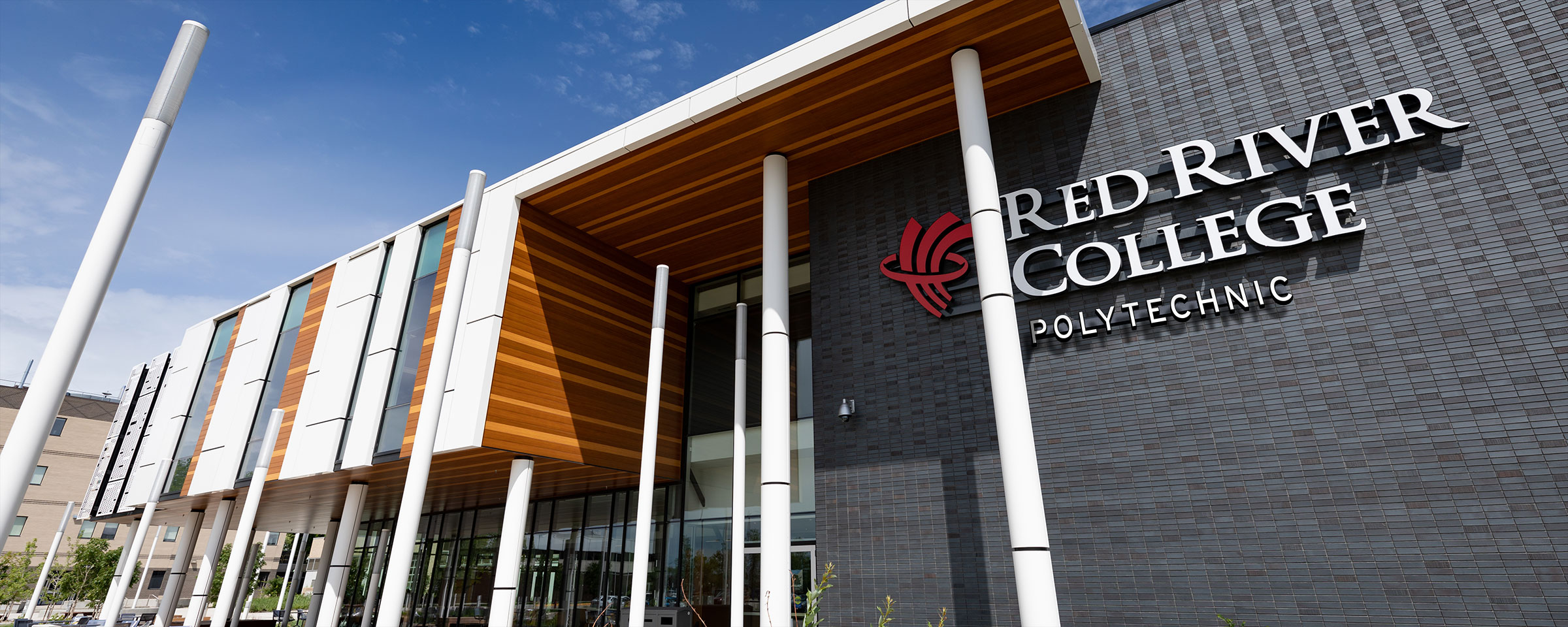College goes whole hog on partnership with Manitoba Pork
Always on the cutting edge of culinary innovation, Red River College students are learning how best to “put it in pork.”
Last week, the College’s Paterson GlobalFoods Institute (PGI) played host to a product information showcase and meat-cutting demonstration by Manitoba Pork — the latest result of a longstanding partnership between the two organizations.
Susan Riese, manager of public relations and consumer marketing programs at Manitoba Pork, estimates the partnership is close to 20 years old, dating back to the first-ever Manitoba Pork Cook-off, a now annual event that allows RRC’s Culinary Arts students to show off their pork prowess in the kitchen.
“We want to encourage these young aspiring chefs to think of pork as the top choice protein [with] all the versatility and nutritional benefits that come with that,” says Riese. “Some day they’ll be in a position to influence or plan menus or maybe even have their own restaurants, so we’re just reminding them that it’s not always about beef and chicken — that pork has a place at the table.”
In addition to the cook-off, cutting demos and other workshops, Manitoba Pork has on-site recognition at PGI in the form of the Manitoba Pork Apprenticeship Lab.
Culinary arts instructor Cameron Tait (shown above, at right) works in the lab with tomorrow’s top chefs to change the public’s perception of pork.
“In North America, we tend to only look at primary cuts like tenderloin, pork loin and chops, [but] there are so many other really interesting cuts you can utilize on the pig,” Tait says while cooking up pork jowl, a portion that’s especially popular in Japan.
“On a chicken, you’ve got legs, thighs and breasts, but on a hog, you’ve got everything from snout to tail. You can do moist cooking, dry cooking, curing, smoking, air drying, making hams, making pancetta, making sausages — it’s endless, really. I think it’s more versatile than beef, chicken, veal, lamb, everything. And it’s more affordable, too.”
According to Canada Pork’s latest annual report, Canadians ate more pork last year than beef, with consumption also experiencing a higher rate in growth than both chicken and beef.
In addition to its versatility and affordability, Tait says pork reigns supreme because the Canadian industry does a great job of always improving its product.
“In the past, people looked at pork as an unhealthy meat because of the fat content, but Canadian pork producers have lowered the fat content to meet people’s dietary needs and restrictions,” he says.
“Also, you don’t have to cook it well done anymore. The feed and the growing of the hogs is so closely regulated that pork can be cooked with a touch of pink with no health effects.”
This year’s Manitoba Pork Cook-off takes place on Fri., Nov. 18, at PGI. During the event, competing culinary arts students will prove not only how tasty pork is, but how tasteful the meat can be.
“We want to see pork on fine dining tables, not just the casual type restaurants where pulled pork or ribs is all the rage,” Riese says.
“Those (casual pork recipes) are great, but they’re kind of a no-brainer. I’m talking the high-end restaurants where you typically see seafood or steak or beef tenderloin. I often find that pork is missing from the menu. There is some gorgeous stuff you can do with pork.”
Riese says she enjoys working with RRC to cook up new ideas for both chefs and consumers, noting Manitoba Pork recently shot some how-to videos starring Tait. Likewise, Tait says it’s always a pleasure to partner with Manitoba Pork.
“I truly like working with Manitoba Pork and have formed some great relationships,” he says. “They’re really great to the College, and such great supporters. They see the value in us, and we see the value in them. It’s a symbiotic relationship.”
— Profile by Jared Story (Creative Communications, 2005)

